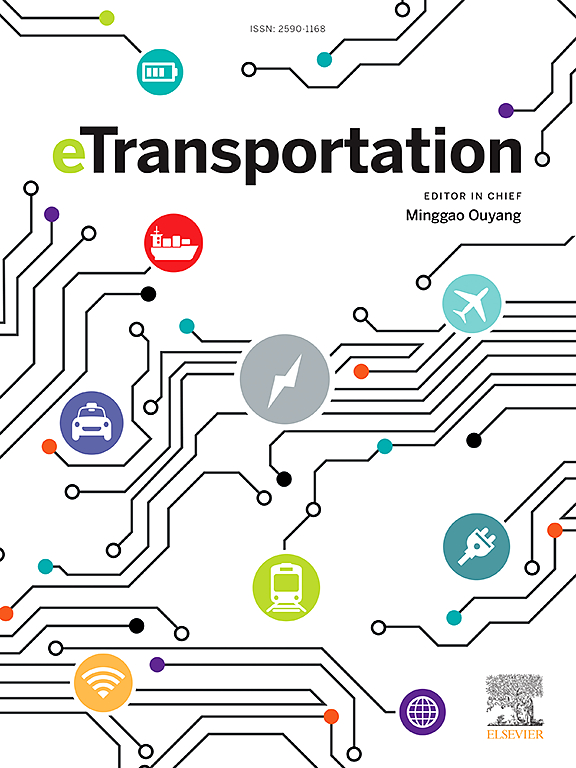Electric flying vehicles: A promising approach towards multidimensional transportation
IF 17
1区 工程技术
Q1 ENERGY & FUELS
引用次数: 0
Abstract
The multidimensional transportation system provides an effective solution for solving the traffic congestion problems. Electric flying vehicles have drawn much attention towards low-altitude intelligent transportation as the promising passenger carrier, which have significant differences than conventional road vehicles or aircraft owing to their ability on multi-domain transport between land and air. Considering the integration of electrification, connection, and intelligence, the electric flying vehicles become the research hotspot, guiding the development of future scientific and technological revolution and leading the industrial change in transportation. In this article, a comprehensive in-sight review of the research progress of flying vehicles is summarized, from the view of main essential techniques, industrialization, airworthiness and access, challenges and perspectives. The main worldwide advances on aerodynamic configuration are summarized with detailed comparison, and the key techniques are discussed for directing future potential breakthrough. The electrification of flying vehicle still needs more improvement, including the high-energy-density batteries, safety, long-lifespan health management, environmental adaptability, recharging methods, thermal management and others. Moreover, the general progress of airworthiness regulation and industrialization is overviewed. The article highlights the detail panorama of flying vehicle industry, wishing it to help find out the weak in the industrial chain or new growing subject discipline. In future, the electric flying vehicles will have large-scale applications in next 10 years, but there still amounts of techniques and basic theories to explore. The article hopes to delivers a comprehensive and thorough review of current progress, to help improve the better design of new configuration products and breakthrough of essential techniques, making the flying vehicle to construct a multidimensional transportation network.
电动飞行器:多维交通的一种有前途的方法
多维交通系统为解决交通拥堵问题提供了有效的解决方案。电动飞行器作为一种极具发展前景的客运载体,在低空智能交通领域受到了广泛的关注。电动飞行器与传统的道路车辆或飞机相比,具有地空多域运输能力。考虑到电气化、互联化、智能化的融合,电动飞行器成为未来科技革命发展的研究热点,引领交通运输产业变革。本文从飞行器的主要关键技术、产业化、适航与准入、挑战与展望等方面,对飞行器的研究进展进行了综述。对国内外在气动构型研究方面的主要进展进行了详细的比较和总结,并对今后可能取得突破的关键技术进行了探讨。飞行器的电气化还需要更多的改进,包括高能量密度电池、安全性、长寿命健康管理、环境适应性、充电方式、热管理等。此外,还概述了适航监管和产业化的总体进展。本文重点介绍了飞行器产业的详细全景,希望能从中发现产业链中的薄弱环节或新兴学科。未来10年,电动飞行器将有大规模的应用,但在技术和基础理论方面仍有大量的探索。本文希望对目前的进展进行全面深入的回顾,有助于改进新配置产品的更好设计和关键技术的突破,使飞行器构建多维交通网络。
本文章由计算机程序翻译,如有差异,请以英文原文为准。
求助全文
约1分钟内获得全文
求助全文
来源期刊

Etransportation
Engineering-Automotive Engineering
CiteScore
19.80
自引率
12.60%
发文量
57
审稿时长
39 days
期刊介绍:
eTransportation is a scholarly journal that aims to advance knowledge in the field of electric transportation. It focuses on all modes of transportation that utilize electricity as their primary source of energy, including electric vehicles, trains, ships, and aircraft. The journal covers all stages of research, development, and testing of new technologies, systems, and devices related to electrical transportation.
The journal welcomes the use of simulation and analysis tools at the system, transport, or device level. Its primary emphasis is on the study of the electrical and electronic aspects of transportation systems. However, it also considers research on mechanical parts or subsystems of vehicles if there is a clear interaction with electrical or electronic equipment.
Please note that this journal excludes other aspects such as sociological, political, regulatory, or environmental factors from its scope.
 求助内容:
求助内容: 应助结果提醒方式:
应助结果提醒方式:


